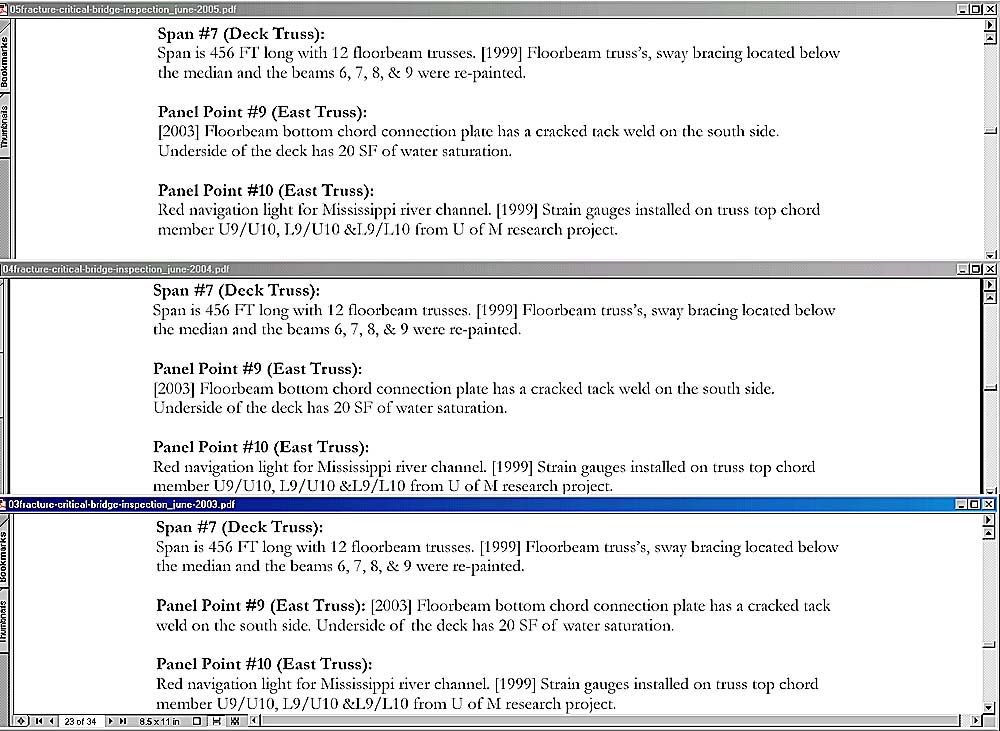http://www.dot.state.mn.us/i35wbridge/history.html

That is NOT to say each report is fully identical with all the others. Some have pictures, and there are sections in most or all reports which DO appear to have been updated from previous years. However, there are just as obviously cut and pasted sections, and since some of these concern the critical mainspan failure point, it is something that needs to be investigated.
Also, from the 2003 report, I found reference to graffiti which had been painted on the U10 East truss gusset plate. There is an access ladder attached to L10-U10, as you can see from previous images, and there are reports that un-authorized persons were climbing up into the superstructure from a different section of the bridge.
It is possible, perhaps even probable, that someone would have painted over an obscene word or phrase, perhaps not taking the time to match the paint color.
For the outlines of paint which might have been used to cover graffiti, however, to match the fracture lines which dropped the mainspan into the river, stretches credibility further than I am willing to just gloss over.
There are explanations I might accept for some of this coincidence, centered around East Truss panel point U10. Obviously this is a critical point in the mainspan, along with three other symmetrical and similarly located points, where the effective cantilever changes over into a simple truss. The top chord member immediately south of U10 is in tension, whereas the top chord member immediately north of U10 is in compression.
This is an important consideration. The weight of the bridge is pulling the top chord towards midspan for the first two panels of the truss riverward from the piers. Between those two points, beginning one panel riverward from U10, the bottom chord is in tension, carrying a large percentage of the weight of the rest of the mainspan. That tension is transferred up the L11-U10 diagonal to the U10 gusset, and thence along the top chord back to the piers and the counterbalancing opposite sidespan.
Clearly, this is why U of M placed strain sensors there, and at the matching symmetrical structural points around the bridge. This MAY be why there is an access ladder there. It is distinctly POSSIBLE that a graffiti artist chose not to reach further than from the top of this ladder, for fear of falling or just plain laziness.
But unless it can be shown that the repair paint was corrosive to some degree, I find it difficult to explain why the fracture lines so closely match the discoloration perimeter.
Sheer coincidence?
Perhaps, but people died as a direct result of this "coincidence". The damages total in the billion dollar range, or will by the time the survivors are paid off and the bridge is rebuilt. The East Truss U10 gusset was one of the very first sections of steel to be cut free, barged, and hauled away after clean-up and analysis began.
Questions like these, coincidences like these, when they involve the loss of human life and hundreds of millions of dollars, should not, in my opinion, be swept under the rug, they need to be examined VERY closely, preferably on the record, in a sworn statement.